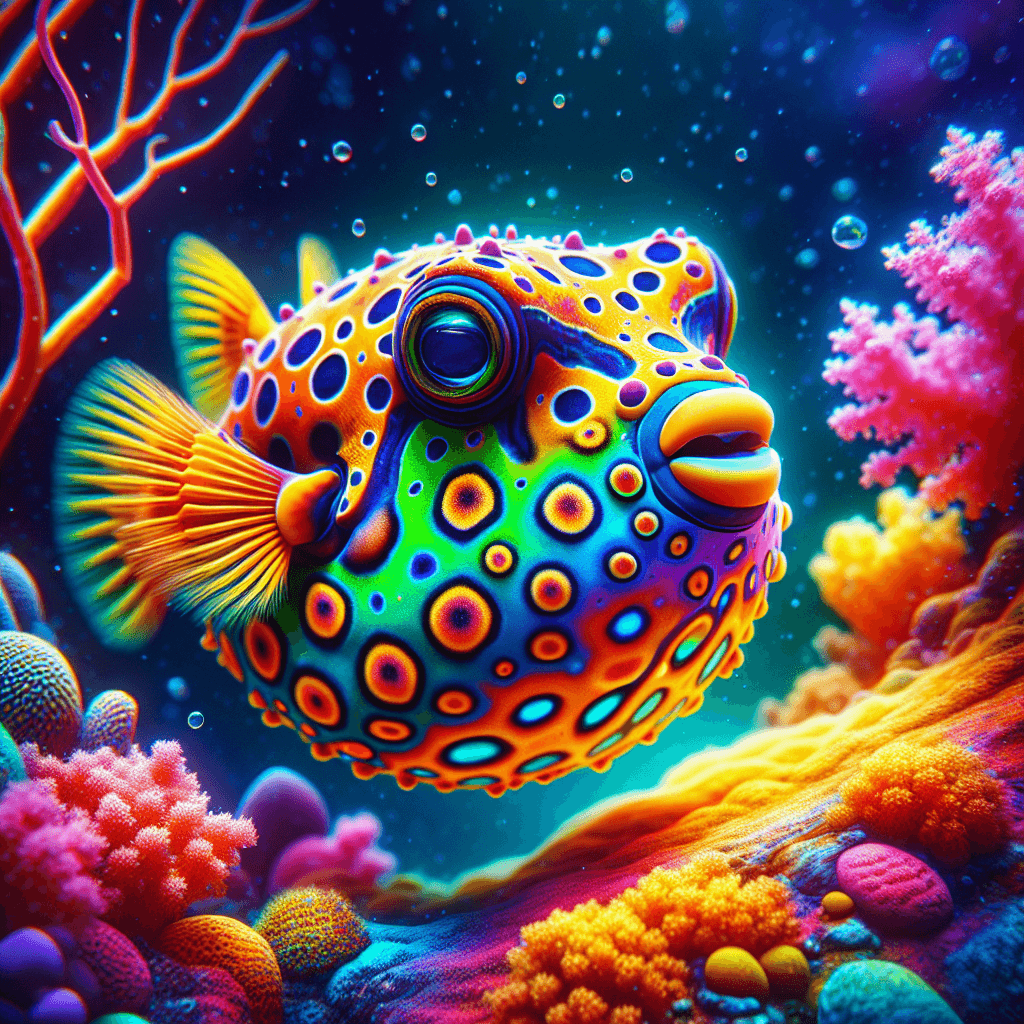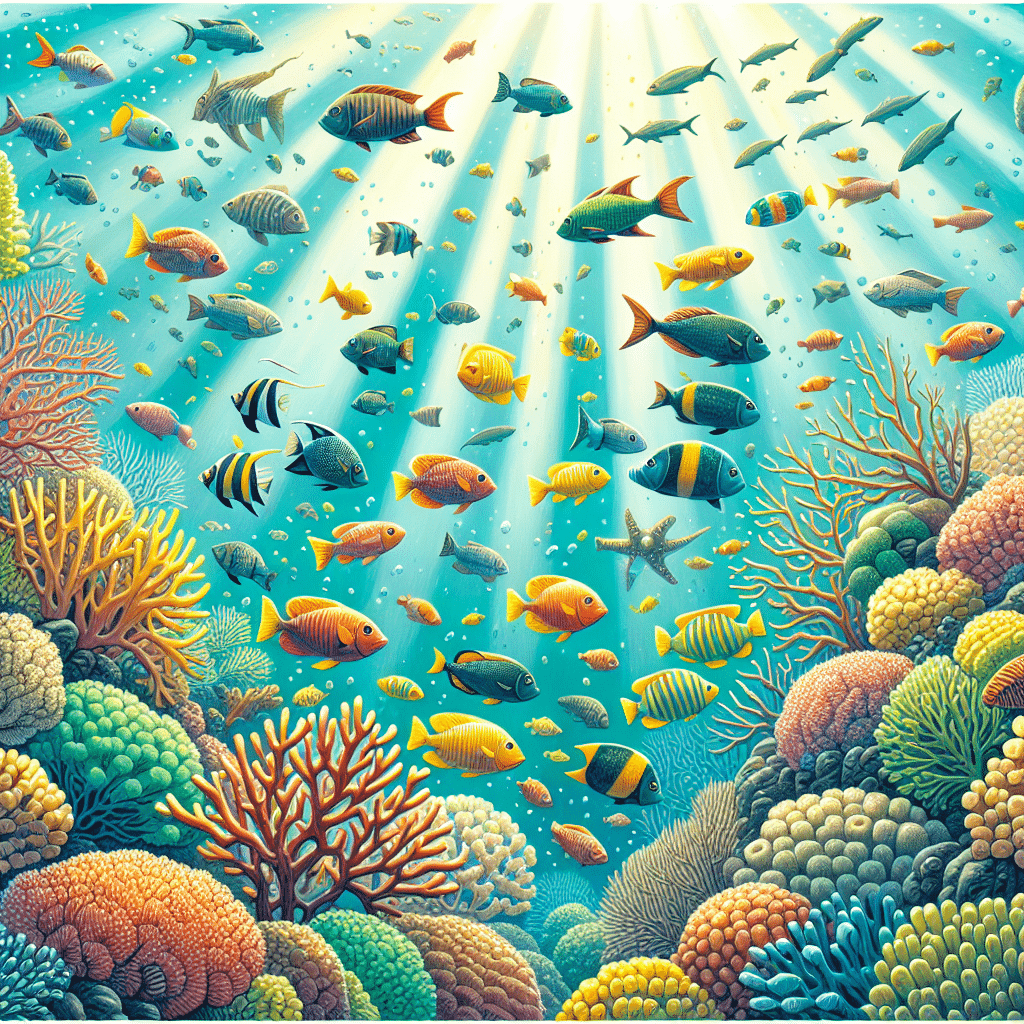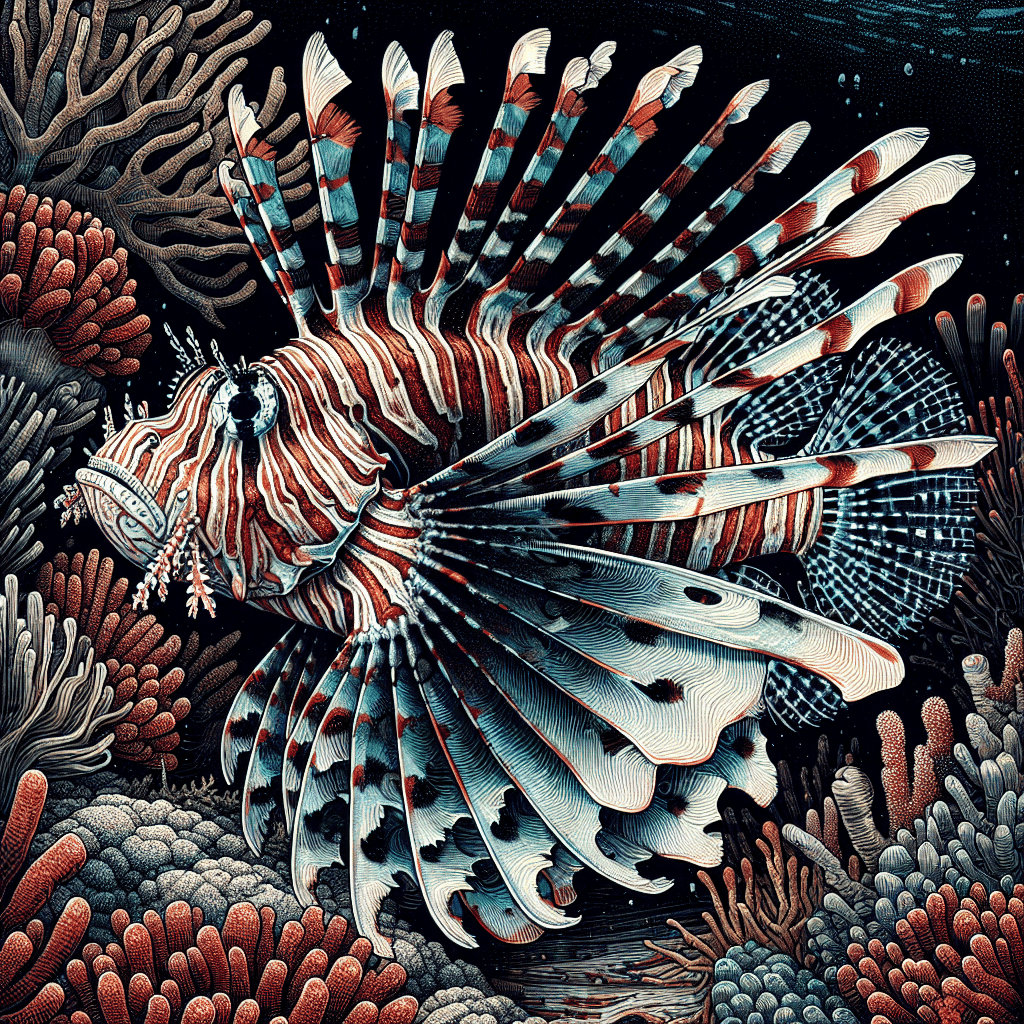Getting to Know Boxfish
Introduction to Boxfish
I find boxfish to be one of the most fascinating species in the underwater world. These unique fish are easily recognizable due to their distinctive box-shaped bodies and vibrant colors. The yellow boxfish (Ostracion cubicum) is particularly notable, and it can reach a maximum length of 45 centimeters (18 inches) (Wikipedia). Their appearance is not just for show; it’s a vital part of their survival strategy.
Physical Characteristics of Boxfish
Boxfish possess a rigid and armored body structure made up of bony plates, which provides them with protection against predators. This box shape is not merely aesthetic; it plays a critical role in their swimming style, known as ostraciiform locomotion. While this body structure can limit their movement, it also offers the boxfish a unique advantage in their aquatic environment.
| Feature | Description |
|---|---|
| Body Shape | Box-shaped, rigid, and armored |
| Maximum Length | 45 cm (18 in) |
| Coloration | Bright yellow with black spots |
| Swimming Style | Ostraciiform locomotion (gondolier style) |
The rigid bony plates of the boxfish allow for essential functions such as feeding and maneuvering through the water. The fish has openings for its mouth, eyes, fins, and tail, facilitating movement in various directions, including backwards.
One particularly interesting aspect of boxfish is their skin, which secretes a highly toxic mucus. This secretion acts as an additional layer of defense, deterring potential predators from attacking (Nausicaa). The bright yellow coloration, combined with this toxicity, serves as a warning sign to other marine creatures.
In the realm of aquarium care, understanding these physical characteristics is crucial for any hobbyist interested in keeping boxfish in their reef tank. Their unique adaptations make them both a challenge and a delight to care for. For those looking to explore other types of marine fish, you might want to check out articles on popular species like clownfish or tang.
Habitat and Behavior of Boxfish
Natural Habitat of Boxfish
The Yellow Boxfish is typically found in the warm waters of the Red Sea and the Pacific Ocean, stretching from the Hawaiian Islands and southern Japan to the Tuamotu Islands and New Zealand. They thrive at depths ranging from 1 to 50 meters, often favoring areas with crevices and ledges where they can find shelter. Adult boxfish usually prefer deeper coastal slopes, while juveniles are often seen in small groups during the summer months in New South Wales (Nausicaa, Australian Museum).
| Region | Depth Range (meters) |
|---|---|
| Red Sea | 1 – 50 |
| Pacific Ocean | 1 – 50 |
| Hawaiian Islands | 1 – 50 |
| Southern Japan | 1 – 50 |
| Tuamotu Islands | 1 – 50 |
| New Zealand | 1 – 50 |
Social Behavior of Boxfish
In terms of social interactions, the Yellow Boxfish is mostly solitary, but they can be found in small harems during breeding time, which typically consists of one male and two to four females. This species is known for being shy and curious, often taking time to observe its surroundings, whether in the wild or in an aquarium setting (Nausicaa). Their unique swimming style, which resembles a gondolier’s movement, allows them to navigate their environment effectively.
The Yellow Boxfish’s solitary nature makes it an intriguing choice for aquarium enthusiasts. However, it’s essential to consider their temperament and provide them with adequate space and hiding spots in a reef tank to ensure they feel secure and comfortable. The combination of their beautiful appearance and interesting behavior makes them a captivating addition to any marine fish collection. For more information on other fascinating marine fish, check out our articles on marine fish and specific species like clownfish and pufferfish.
Feeding Habits of Boxfish
Diet of Boxfish
When it comes to the diet of boxfish, these fascinating creatures are omnivorous and enjoy a varied menu. I’ve learned that they mainly feast on marine algae, but they also have a taste for worms, sponges, crustaceans, mollusks, and small fish that can fit into their mouths. This diverse diet allows them to thrive in their natural habitats, which are rich in different marine organisms.
Here’s a quick overview of what boxfish typically eat:
| Food Type | Examples |
|---|---|
| Marine Algae | Various species of seaweed |
| Worms | Sand-dwelling polychaete worms |
| Crustaceans | Small shrimp and crabs |
| Mollusks | Snails and clams |
| Sponges | Various types of marine sponges |
| Small Fish | Tiny fish species that can fit in their mouths |
Sources include Wikipedia and Free the Ocean.
Feeding Patterns of Boxfish
Boxfish have some interesting feeding patterns that reflect their unique adaptations. They tend to forage along the ocean floor, where they can easily find their preferred benthic organisms, such as mollusks and crustaceans. I’ve noticed that they often use their small mouths to pick at food sources, sometimes grazing on algae or sifting through the sand for hidden treats.
In terms of feeding frequency, boxfish usually eat several small meals throughout the day rather than one or two large ones. This pattern helps maintain their energy levels and supports their health in a natural setting.
It’s also essential for aquarium hobbyists to replicate these feeding patterns when caring for boxfish in captivity. Offering smaller, more frequent meals can help keep them healthy and happy in a reef tank environment. For more information on maintaining a thriving reef tank, check out our resources on marine fish and specific species like clownfish and pufferfish.
Unique Adaptations of Boxfish
Boxfish are fascinating creatures with some unique adaptations that help them survive in their underwater environments. Two of these adaptations are their defensive mechanisms and their reproductive behaviors.
Defensive Mechanisms of Boxfish
One of the most intriguing aspects of boxfish is their defensive strategy. They possess a chemical defense system that includes a potent toxin known as ostracitoxin. When boxfish feel threatened or stressed, they can exude this toxin through their slime, creating an invisible cloud in the water around them (Tidal Tao). This toxin is unlike any other known fish toxins and doesn’t require direct contact to be effective.
When alarmed or attacked, boxfish can also blow themselves up to appear larger and more intimidating. This not only helps deter predators but also releases the ostracitoxin, creating a dangerous environment for any potential threats (Free the Ocean). However, this powerful toxin can be harmful even to humans, leading to severe poisoning if consumed (Tidal Tao).
Here’s a quick overview of their defensive traits:
| Defense Mechanism | Description |
|---|---|
| Ostracitoxin | A potent toxin secreted through mucus when stressed, affects nearby predators. |
| Inflation | Ability to puff up to appear larger and release toxins, deterring threats. |
| Carapace | Enclosed in bony plates that provide physical protection from attacks. |
Reproductive Behavior of Boxfish
Boxfish have a unique reproductive strategy that differs from many other marine species. They are known to engage in external fertilization, where females release eggs into the water, and males subsequently fertilize them. This behavior typically occurs in shallow waters where the eggs can be better protected from predators.
Interestingly, boxfish can also exhibit a form of parental care, as some species may guard their nests against potential threats until the eggs hatch. This behavior ensures a higher survival rate for the young boxfish, which are quite vulnerable after hatching.
For those interested in keeping boxfish in a home aquarium, it’s crucial to consider their unique reproductive behaviors and the potential challenges they may pose. Their tendency to release toxins can be particularly problematic in smaller tanks, affecting other marine life. For more on marine fish care, check out our articles on various species like pufferfish, clownfish, and triggerfish.
In summary, understanding the adaptations of boxfish can enhance our appreciation of these unique creatures and inform our care practices if we decide to include them in our aquariums.
Boxfish in the Wild
Boxfish in Ecosystems
Boxfish, particularly the yellow boxfish (Ostracion cubicum), play a unique role in their marine ecosystems. Found in the Red Sea and the Pacific Ocean, they inhabit depths ranging from 1 to 50 meters. With a maximum length of 45 centimeters (about 18 inches), these fish have a distinctive box-shaped body that allows them to swim using a unique method called ostraciiform locomotion.
In their natural habitat, boxfish primarily feed on algae, microorganisms, mollusks, sponges, small crustaceans, polychaete worms, foraminifera, and even small fish (Nausicaa). Their feeding habits help control algae growth and contribute to the overall health of the reef ecosystem. By consuming various invertebrates, boxfish also play a role in maintaining the balance of marine life.
Interactions with Other Marine Life
Boxfish are generally solitary creatures but can be found in small groups during breeding seasons, typically consisting of one male and two to four females. They are known to be shy and curious, often observing their surroundings. This behavior allows them to interact with various marine species while maintaining their own safety in the wild.
In the reef environment, boxfish may encounter numerous marine animals, such as clownfish, tangs, and pufferfish. Their interactions can vary from competition for food to mutual observation. Interestingly, their unique body shape and swimming style can also influence how they are perceived by predators. The armored, rigid body of the boxfish acts as a defense mechanism, deterring potential threats.
As a reef tank enthusiast, it’s fascinating to think about how boxfish contribute to the dynamics of their ecosystem. Understanding their relationships with other species can enhance my appreciation for these unique fish and inform my decisions when selecting compatible tank mates for my aquarium. For more information on compatible marine fish, check out our section on marine fish.
In summary, the boxfish plays an essential role in its ecosystem, from maintaining the health of the reef through its feeding habits to interacting with other marine life. These interactions and their unique adaptations make boxfish a captivating species to observe in the wild.
Boxfish in Captivity
Considerations for Keeping Boxfish
When it comes to keeping boxfish, there are several important considerations to keep in mind. First off, boxfish are known for their unique appearance and personality, making them an attractive choice for many reef tank hobbyists. However, they come with a few challenges that must be addressed before adding them to your aquarium.
One major consideration is that boxfish, especially yellow boxfish, possess a powerful toxin called ostracitoxin. This toxin can be released when the fish feels threatened or alarmed, potentially wiping out all life in the aquarium. Therefore, it’s crucial to create a calm environment for these fish. Avoid sudden movements or loud noises near the tank, as even simple disturbances like turning on the lights can stress them out and trigger toxin release.
Here’s a quick overview of key considerations:
| Consideration | Importance |
|---|---|
| Tank Size | Boxfish require ample space to swim comfortably. |
| Water Quality | Maintain high water quality to reduce stress. |
| Tank Mates | Choose compatible tank mates to avoid stress. |
| Environment Stability | Create a stable environment to minimize disturbances. |
Challenges of Keeping Boxfish
Keeping boxfish is not without its challenges. Besides their toxicity, they can be quite sensitive to changes in water quality and tank conditions. It’s essential to monitor parameters like pH, salinity, and temperature regularly to ensure a stable environment. Sudden fluctuations can lead to stress and health issues for your boxfish.
Another challenge is their feeding habits. Boxfish are generally slow eaters and can be timid around more aggressive fish. This means they might not always get enough food if kept with faster or more assertive species. It’s vital to ensure they have access to food without competition from other fish.
Additionally, their unique defensive mechanism, where they secrete toxins when alarmed, is not just a concern for other tank inhabitants but also for the boxfish itself. If they feel threatened, they can become stressed, which can lead to health problems.
Overall, while keeping boxfish can be rewarding, it requires careful planning and management to ensure their health and well-being. For more information on marine species that might coexist better in your tank setup, you can explore options like clownfish or grouper.
Boxfish Care and Maintenance
Taking care of boxfish in an aquarium can be a rewarding experience. Their unique appearance and behavior make them a fascinating addition to any reef tank. Here’s what I’ve learned about setting up their tank and feeding them properly.
Tank Setup for Boxfish
When setting up a tank for boxfish, it’s essential to create an environment that mimics their natural habitat. Here are some key considerations:
| Feature | Recommendation |
|---|---|
| Tank Size | Minimum of 50 gallons for a Yellow Boxfish |
| Water Temperature | 75°F to 82°F (24°C to 28°C) |
| pH Level | 8.1 to 8.4 |
| Salinity | 1.020 to 1.025 specific gravity |
| Filtration | Strong filtration system to maintain water quality |
| Decor | Live rock, sand substrate, and plenty of hiding spots |
The Yellow Boxfish typically inhabits coral and rocky reefs at depths ranging from 1 to 50 meters (Nausicaa). Providing similar conditions in your aquarium will help them thrive. I also recommend using a strong filtration system as boxfish are sensitive to poor water quality.
Feeding Boxfish in Aquariums
Feeding boxfish requires attention to their dietary needs. The Yellow Boxfish mainly feeds on algae, micro-organisms, mollusks, sponges, small crustaceans, and polychaete worms (Nausicaa). Here’s a simple guideline for their feeding routine:
| Food Type | Frequency | Notes |
|---|---|---|
| Algae-based flakes | Daily | Provides essential nutrients |
| Frozen or live food (mollusks, small shrimp) | 2-3 times a week | Helps mimic natural diet |
| Vegetables (blanched spinach or zucchini) | Occasionally | Good for variety |
It’s crucial to avoid overfeeding, as boxfish can be prone to obesity. I typically feed them small amounts, ensuring they consume everything within a few minutes. Observing their feeding behavior can also help gauge their health. For more on what marine fish like boxfish might eat, check out our section on marine fish.
By providing the right tank setup and a balanced diet, I’ve found that boxfish can be healthy and active in my reef tank. Their curious nature and unique swimming style, often likened to the gondolier style, make them a delightful addition.
Risks and Precautions with Boxfish
Handling Boxfish
When it comes to handling boxfish, caution is key. These fish can be quite sensitive and easily stressed, which can lead to dangerous situations. I always make sure to minimize any disturbances around them. For example, I avoid sudden movements or loud noises, as these can trigger a boxfish to release its potent toxin, ostracitoxin. This toxin can be harmful not only to other fish but also to humans, causing severe reactions if ingested or if it comes into contact with broken skin.
It’s best to observe boxfish from a distance and avoid direct handling unless absolutely necessary. If I need to catch one for any reason, I use a net with a soft mesh to minimize stress and prevent injury.
Potential Dangers with Boxfish
Boxfish possess a unique defense mechanism that can pose significant risks in both natural environments and aquariums. When alarmed, they secrete a potent toxin into the water, creating an invisible cloud that can be lethal to nearby fish (Tidal Tao). This toxin, unlike any other known fish toxins, does not require direct contact to be harmful. It has evolved to deter predators like sharks and rockcod but can also cause severe poisoning in humans who attempt to consume cooked boxfish.
In a home aquarium, keeping a boxfish can be particularly challenging. If disturbed, a yellow boxfish might release its toxin, potentially wiping out all marine life in the tank (Free the Ocean). I’ve read reports of entire aquariums being devastated due to the toxic effects of a single boxfish. Therefore, it’s crucial to carefully consider the implications of adding one to my reef tank.
To ensure the safety of my aquarium’s inhabitants, I avoid placing boxfish in community tanks with other species. If I ever decide to keep a boxfish, I would set up a dedicated tank and pay close attention to their behavior to avoid any mishaps. Always remember, while boxfish are fascinating, their care comes with significant risks that should not be underestimated.



